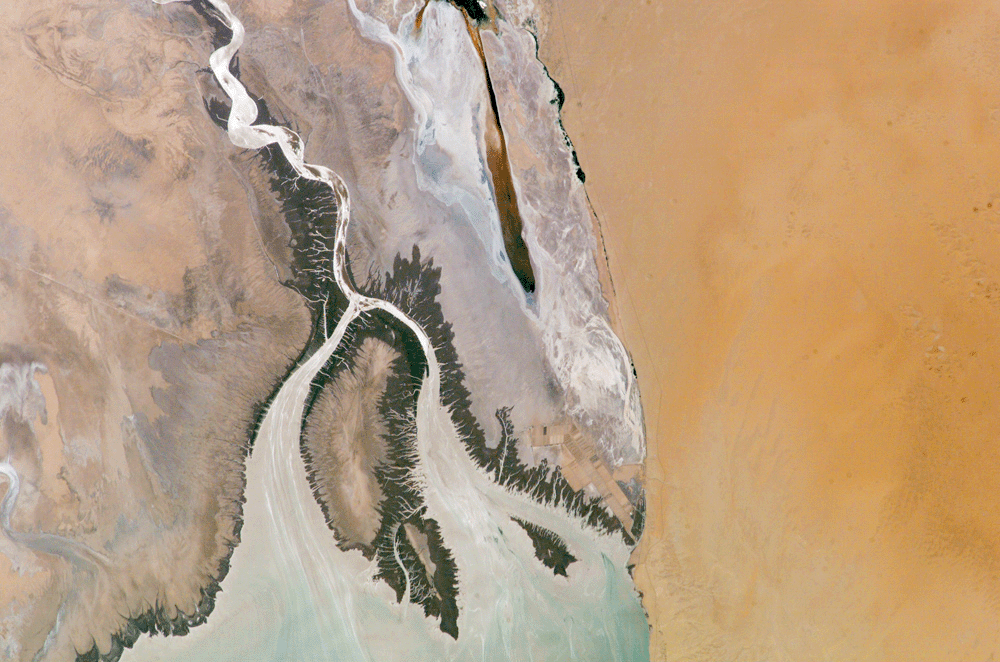
THE COLORADO DELTA
Delta ID # 62.
Contributed by Huh et al, 2004.
Colorado River Delta, Mexico, North America
LOCATION LAT. 31°44’N, LONG. 114°21’W
LANDMASS DRAINED MEXICO, NORTH AMERICA
BASIN OF DEPOSITION GULF OF CALIFORNIA
CLIMATE DESERT (BWh)
AIR TEMP RANGE 12°C – 32°C,
TIDAL AMPLITUDE 7-9 M
TYPE SEMIDIURNAL
DISCHARGE SEDIMENT 135X10
6 TONS/YRID 7038038000231450, PATH 38 ROW 38

IMAGE ACQUIRED NOVEMBER 10, 2002
Contributed by Professor George F. Hart, LSU
Delta type:
Image ID: ISS009, Roll E Frame: 9839

Acquired: June 2nd., 2004.
Geo-referenced files
Description
The Colorado River Delta was initiated about 3 million ybp and is the largest watershed in the southwestern USA. The delta is about 140 km long but excessive inland water use is diminishing its size yearly. The Hoover (1935) and Glen Canyon (1964) dams both impound water.
The arid climate creates extensive white salt flats to the
southeast of the Cienega (wetland) de
62-i02: In the image the gray-brown linear streaks extending southeast from Isla Montague into the Gulf are floodplain sediments mobilized by tidal surges and wave action rather than fluvial processes. Dark green areas bordering the channel, shoreline, and Isla Montague are riparian and estuarine vegetation. Prior to impoundment of water from upstream dams the delta provided habitat for a wide variety of species including shrimp, corvina fish, and vaquita porpoise. Replacement of water into the delta from groundwater and upstream releases have helped to revive some of the preexisting habitat. This reinvigorated habitat also supports a local ecotourism industry within the delta region. Continuing drought conditions affecting the southwestern USA may decrease water delivery to the delta with significant impacts on both the ecologic and economic health of the region [JSC].